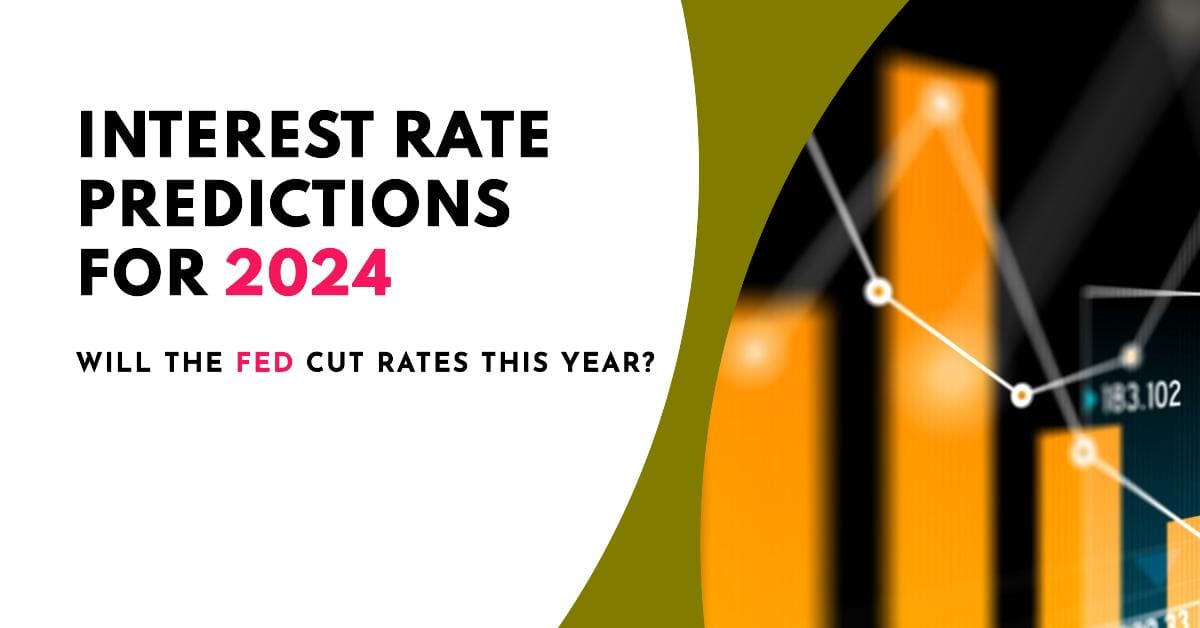As we stand in the middle of May 2024, the question of interest rate predictions for the rest of this year is a pressing one. With the Federal Reserve's recent decision to maintain rates between 5.25% and 5.5%, the highest level over a decade, the path forward remains a topic of intense speculation and analysis.
After a period of aggressive rate hikes in response to stubborn inflation, recent economic data has introduced a layer of complexity, leaving borrowers and investors in a wait-and-see mode. Let's explore the latest Federal Reserve indications and what they might signal for the remainder of the year.
Interest Rate Predictions for 2024
Throughout 2023 and into early 2024, the Federal Reserve, America's central bank, embarked on a series of interest rate increases to combat inflation. This strategy aimed to cool down the economy by making borrowing more expensive, ultimately slowing down consumer spending and business investment. The impact has been felt across various sectors. Mortgage rates, for example, reached a multi-year high in April, dampening the housing market and leaving potential homebuyers facing a steeper climb.
A Glimpse of Hope: Inflation Cools, But Questions Remain
However, the latest inflation report on May 15th offered a glimmer of hope. Core inflation, a key metric excluding volatile food and energy prices, showed signs of cooling, potentially reaching its lowest level in three years. This positive development is a welcome change from the earlier months of 2024, which saw inflation stubbornly hovering above the Fed's target rate of 2%. It suggests that the Fed's aggressive rate hikes might be starting to have their intended effect.
But economists caution against declaring victory too soon. Inflation remains well above pre-pandemic levels, and past episodes of high inflation have shown a tendency to linger. Additionally, global factors like the ongoing war in Ukraine and supply chain disruptions continue to pose risks to price stability. The Fed will likely continue to monitor these factors closely in the coming months.
Fed Meeting Insights: A Cautious Pivot or Holding Course?
The Fed's policy meeting on May 1st, 2024, did not announce a definitive shift in its stance, but the tone and content of the discussions hinted at a more nuanced approach. There was a clear emphasis on data dependence, with policymakers indicating a willingness to adjust the pace of rate hikes based on incoming inflation figures. This suggests a move away from a predetermined path of aggressive increases and towards a more flexible approach that considers the latest economic data.
Furthermore, some policymakers acknowledged the potential growth risks associated with further rate hikes. While the Fed remains committed to bringing inflation down to its target level, it also wants to avoid tipping the economy into a recession.
This recognition of the potential trade-off between inflation control and economic growth suggests a more cautious approach moving forward. The possibility of smaller rate increases or even a pause later in the year becomes more likely if upcoming inflation data continues to show a sustained decline.
Experts are now recalibrating their predictions for interest rate cuts, with some forecasts suggesting that the first cut could come later in 2024 than previously expected. The anticipation of rate cuts has been tempered by the latest inflation reports, which have shown a stickier-than-anticipated inflation scenario.
Looking ahead, projections indicate a potential decrease in rates to 4.25% in 2024 and further down to 3.25% in 2025. However, these forecasts are subject to the ever-evolving economic indicators and the Fed's cautious approach to ensure that any rate cuts do not inadvertently exacerbate inflation.
Wall Street banks have also adjusted their expectations, with the end-of-2024 interest rates now projected to decrease to 4.6%, signaling multiple rate cuts in the upcoming year. This dovish turn is seen as a response to the current economic conditions and a strategic move to support continued growth.
What Does This Mean for Different Financial Players?
The evolving situation makes it challenging to predict the exact trajectory of interest rates. Here's how it might affect different groups:
- Borrowers: If you're planning a loan for a car, home, or other purposes, closely monitor the situation. While rates might not plummet, a pause or smaller hikes could offer some relief compared to earlier projections. However, be prepared to adjust your budget based on the prevailing rates.
- Savers: With the potential for a slowdown in rate increases, returns on savings accounts might not see significant growth this year. However, the overall economic health remains a factor. If inflation continues to decline, the purchasing power of your savings might improve.
- Investors: Interest rate fluctuations can significantly impact the stock market. A pause in rate hikes could be positive for stocks, as it removes a layer of uncertainty. However, a renewed focus on inflation control by the Fed could lead to volatility, especially if it translates into slower economic growth. Investors should consider diversifying their portfolios to mitigate risk.
The Bottom Line: A Year of Uncertainty with Glimmer of Hope
The interest rate landscape in the US for 2024 remains fluid. While the Fed's commitment to fighting inflation holds firm, recent data suggests a potential shift towards a more data-driven and cautious approach. Stay tuned, as we continue to monitor and interpret the signals from the Federal Reserve and the broader economic landscape.
ALSO READ:
What is the Interest Rate Forecast for Housing in 2024?
Projected Interest Rates in 5 Years: A Look at the Forecasts


